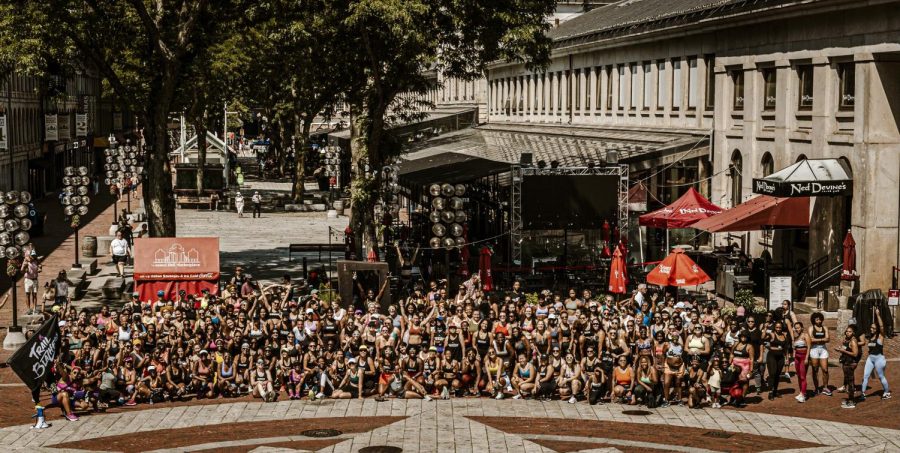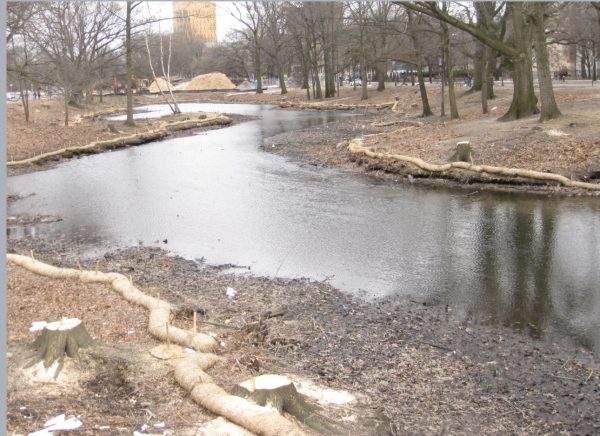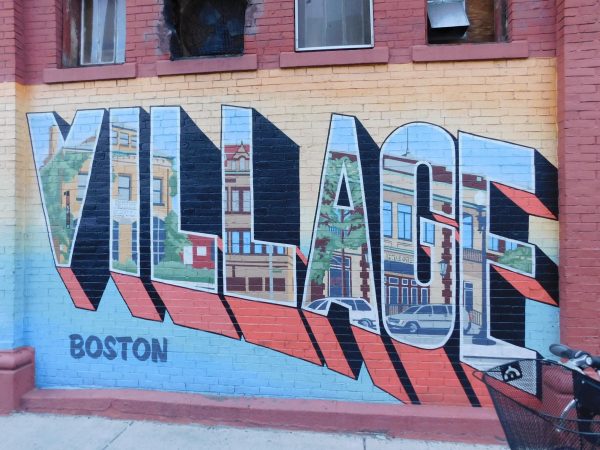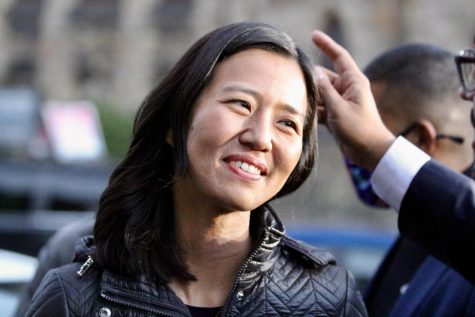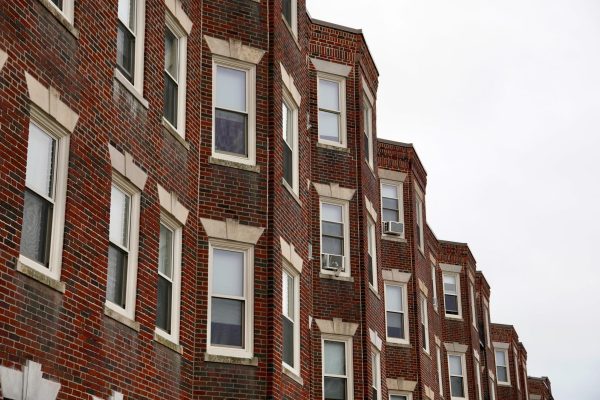Boston’s running community pushes for inclusive change
“We started asking very deliberate questions about why the events skewed the way [they do]”
The Bra Run, July 2022. Photo by George Grullon and courtesy Elizabeth Rock, co-founder and co-organizer of the Bra Run and TrailblazHers Run Co.
Boston is known as one of the most popular running cities in the United States — but its recognition extends far beyond the famed Boston Marathon. With dozens of running clubs and competitions, for both beginning and advanced runners, the city’s running community is vibrant and active.
Like many other sports, however, running has historically excluded people of color, women and nonbinary people. In Boston, there have been growing efforts to make the sport more inclusive and supportive, including the creation of clubs and competitions designed specifically for runners of marginalized identities.
“There’s now more of a lens on us. Our voices are being amplified,” said Alia Qatarneh, a “LeadHer” of TrailblazHers Run Co., an all-female run crew in Boston. “It’s not that these are … new people to the sport. It’s just that now our voices are being amplified.”
Founded in 2020, TrailblazHers focuses on female empowerment and creating safe spaces for women — specifically, women of color — to run. In the last two years, the organization has seen much growth and awareness. Between 2021 and 2022, attendance for its biggest annual event, the Bra Run, has even seen more than a 65% increase, said Qatarneh.
Organizations like TrailblazHers are reshaping the narrative around running in Boston, including facilitating communities for runners who don’t fall into the historic demographic patterns. In 2017, PIONEERS Run Crew took shape, focused on bolstering runners of color, when founder Sidney Baptista could not find a running community for people like him.
“At first, he was turned off by the culture of what Boston running looks like — the classic perception of it being for many people who are white, people who are upper middle class, people who have really fit bodies, which he didn’t really see himself in,” said Aliese Lash, a run captain of PIONEERS, about Baptista. “For a while he was like, ‘I love that for them, but it’s not for me.’”
Not only are there less spaces for non-white runners, but many of Boston’s popular running locations are also in predominantly white neighborhoods.
“I work in Boston, and I ran the Esplanade every day for five years. Boy, is that a white place to run — it is still a white place to run,” said Nora Mann, who has run with Liberty Athletic Club for seven years. “Unless you get out of those areas and into the actual neighborhoods, running in Boston is very, very white.”
Founded in 1948, Boston-based Liberty Athletic Club is the oldest female running club in the country. Before Title IX was passed, such organizations were very limited. Liberty began as a place mothers would bring their daughters to run when schools would not provide athletic opportunities for them, but it quickly became a safe haven for women of all ages to find a running community they could not find elsewhere.
Today, they partner with and support organizations like TrailblazHers and PIONEERS to continue fostering an inclusive running community.
“We have a tremendous opportunity to continue to be there as a place … [for] anybody else who might not feel that there’s a place for her in running,” Mann said. “We want to pay it forward.”
Beyond efforts from grassroots organizations, the Boston Athletic Association, or the BAA, which hosts the Boston Marathon, has also prioritized equitable change in their organization and events. Most notably, the BAA created the Boston Running Collaborative, or the BRC, in 2021, with the goal of partnering with community running organizations to reevaluate the ways that it can be more inclusive.
“Beginning in 2020, we really started to take a look at our events, not only in terms of who was there but which demographics are missing, who is not participating,” said Suzanne Walmsley, the director of youth and community engagement at Boston Athletic Association and the leader of the BRC. “We started asking very deliberate questions about why the events skewed the way [they do]. I don’t think it’s any surprise that distance running, in general in the United States, skews largely white, largely middle, upper class. We were no different, but we really wanted to find out why.”
The BRC is comprised of more than 15 community organizations, including TrailblazHers and PIONEERS. Collaboration with several of these organizations, such as Black Girls RUN! and Black Men Run, were established from the BAA’s Road to Wellness. This annual 5K race started in 2015 and came out of a partnership with the Dimock Center, a health and community organization in Roxbury, and HoodFit, which also focuses on community wellness.
Lash, of PIONEERS, said the Road to Wellness is her favorite event, since the route runs through her neighborhood in Roxbury.
“It’s a really cool way that the BAA pulled their resources, their privilege and their power to be able to put on [this event] for the Black and Brown community,” Lash said. “The event is so special because it’s free, but it also invites people from the community.”
As leader of the BRC, Walmsley said it was her engagement with these organizations that ultimately led to the BRC’s creation.
“As we were talking, … we realized that it would be better to bring everybody else together into the same conversation and really be deliberate about how we’re going forward,” Walmsley said.
BRC initiatives include improving accessibility to BAA events by breaking barriers to participation, most of which are related to space, safety, time and finances, said Walmsley.
The present system for the Boston Marathon, in particular, calls for participants to meet a qualifying time or raise at least $5,000 on behalf of a charity. There is also no lottery system for the Boston Marathon, unlike some of the other world’s greatest marathons in places like New York City and London. Boston’s system has been criticized for its elitism and barriers to participation.
For next year’s race, however, the BAA has allocated marathon bibs for a handful of runners based on nominations from BRC-involved organizations. These recipients do not need to meet the qualifying time nor do they have to raise money to participate. Qatarneh was one of those recipients.
“I would like to see that number increase over time because, like I said, the runners are there,” she said. “It’s just finding avenues and finding ways to help them get to, in this case, the start line.”
Through the BRC, the BAA has also increased the availability of free programming for young runners by hosting a youth running series this past summer and fall to introduce more children to the sport.
“I’m very excited to keep expanding our offerings to youth specifically because I started as a youth track athlete and that’s what got me involved in this community and working in this community,” said Alaina Belanger, a volunteer program manager of the BAA. “So, I think that the more we can offer to the next generation, the better it will be for the future.”
While the BRC is relatively new, the Boston Marathon alone has seen more diversity in its participants, specifically in the context of the gender and national origins of its competitors.
Women were only officially allowed to compete in the Boston Marathon in 1972. That year, there were 9 female entrants and 1,210 male entrants. Since then, the number of women participating in the marathon has been steadily increasing. Most recently, in the 2022 marathon, there were 12,155 female entrants, compared to 16,425 male entrants, which means the race had approximately 42.5% female participation.
There has also been a steady growth in the number of different countries represented at the marathon, as well as an increase in the percentage of non-U.S. runners.
Then, in September, the BAA announced that participants in the 2023 Boston Marathon may register as nonbinary rather than declaring as male or female. This change comes just after the 50-year anniversary of when women were allowed to compete in the Boston Marathon, which was marked in 2022 by its 126th race.
“I think that it’s incredibly important, both on an individual level for those runners who want to participate as their true selves and it’s a very important statement to make because Boston is this seminal event,” Mann said “If Boston is able to do this — and it doesn’t impact the integrity of the race — then it’s going to send an important message.”
Walmsley also said the BAA began tracking the racial demographic data of Boston Marathon entrants in the last few years, but a media relations representative was unable to provide that data. However, they hope to make it available to the public in the future.
People from Boston’s many running organizations agree that progress toward inclusivity in the running community has been significant, but there’s still much more work to do.
“There’s still so much lack of representation,” said Lash. “In some ways, we’re really grateful for what we’re creating here. But if you look slightly outside of what PIONEERS is doing, also what TrailblazHers is doing, representation in running has a long way to go.”
Running enthusiasts keep coming back to how the sport brings people together. It is not only important that there are communities for people to run with, but that these communities are being uplifted. Belanger, of the BAA, emphasized the importance of inclusion and how it improves the running experience.
“The sport gets better when you bring more people in,” she said.
Correction: Liberty Athletic Club is not a member of the Boston Running Collaborative.

